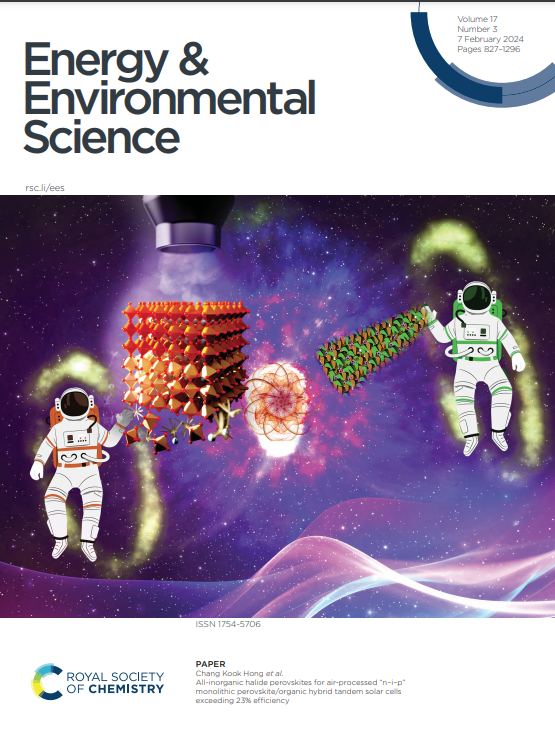Solid-State Electrolytes Expediting Interface-Compatible Dual-Conductive Cathodes for All-Solid-State Batteries
IF 32.4
1区 材料科学
Q1 CHEMISTRY, MULTIDISCIPLINARY
引用次数: 0
Abstract
With the rapid development of solid-state electrolytes (SSEs), high-performance cathode materials specifically designed for all-solid-state batteries (ASSBs) are gathering increasing attention. Achieving interfacial compatibility between the continuously advancing SSEs and cathode active materials (CAMs) is crucial for the realization of advanced ASSBs. Recently, the emergence of interface-compatible dual-conductive (ICDC) cathodes has opened a novel pathway towards developing ASSBs with high energy density and cost efficiency. The ICDC cathode refers to a single cathode material engineered to simultaneously achieve mixed ionic-electronic conductivity while ensuring good compatibility with SSEs in ASSBs. This innovative research topic has been propelled by the ongoing evolution of SSEs. In this minireview, we first discuss the progress in the mutual enhancement of SSEs and cathode materials, with a focus on addressing interface compatibility and dual conductivity challenges faced by conventional layered oxide CAMs in advanced sulfide- or halide-based ASSBs. Then, we outline two primary approaches for achieving ICDC cathodes: sulfurization and halogenation. Finally, we present an outlook, highlighting unresolved questions and future research directions. This minireview serves not only a summary of advancements in ICDC cathodes, but also a fundamental guidance to inspire further exploration for cathode materials integrated with the state-of-the-art SSEs.固态电解质加速全固态电池接口兼容双导电阴极
随着固态电解质的快速发展,专为全固态电池设计的高性能正极材料越来越受到人们的关注。实现先进assb与正极活性材料(cam)之间的界面相容性是实现先进assb的关键。近年来,界面兼容双导电阴极(ICDC)的出现为开发高能量密度、高成本效益的assb开辟了一条新途径。ICDC阴极是指一种单一的阴极材料,可以同时实现混合离子-电子导电性,同时确保与assb中的ssi具有良好的兼容性。这一创新的研究课题是由sse的不断发展所推动的。在这篇综述中,我们首先讨论了ssi和正极材料相互增强的进展,重点讨论了在先进的硫化物或卤化物基assb中,传统层状氧化物cam面临的界面兼容性和双导电性挑战。然后,我们概述了实现ICDC阴极的两种主要方法:硫化和卤化。最后,展望未来,提出了尚未解决的问题和未来的研究方向。这篇微型综述不仅总结了ICDC阴极的进展,而且为激发与最先进的ssi集成的阴极材料的进一步探索提供了基本指导。
本文章由计算机程序翻译,如有差异,请以英文原文为准。
求助全文
约1分钟内获得全文
求助全文
来源期刊

Energy & Environmental Science
化学-工程:化工
CiteScore
50.50
自引率
2.20%
发文量
349
审稿时长
2.2 months
期刊介绍:
Energy & Environmental Science, a peer-reviewed scientific journal, publishes original research and review articles covering interdisciplinary topics in the (bio)chemical and (bio)physical sciences, as well as chemical engineering disciplines. Published monthly by the Royal Society of Chemistry (RSC), a not-for-profit publisher, Energy & Environmental Science is recognized as a leading journal. It boasts an impressive impact factor of 8.500 as of 2009, ranking 8th among 140 journals in the category "Chemistry, Multidisciplinary," second among 71 journals in "Energy & Fuels," second among 128 journals in "Engineering, Chemical," and first among 181 scientific journals in "Environmental Sciences."
Energy & Environmental Science publishes various types of articles, including Research Papers (original scientific work), Review Articles, Perspectives, and Minireviews (feature review-type articles of broad interest), Communications (original scientific work of an urgent nature), Opinions (personal, often speculative viewpoints or hypotheses on current topics), and Analysis Articles (in-depth examination of energy-related issues).
 求助内容:
求助内容: 应助结果提醒方式:
应助结果提醒方式:


